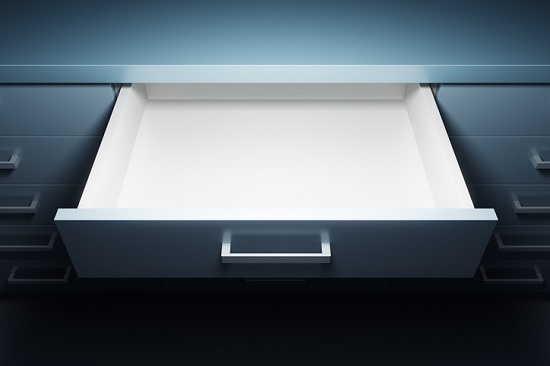
As hearing care providers, there’s one specific type of hearing aid that we all are worried about. It’s detrimental for the patient, and it can avert other people from even making an effort to give hearing aids a chance.
They’re called “in-the-drawer” hearing aids. As opposed to behind-the-ear or in-the-canal hearing aids, in-the-drawer hearing aids never see the light of day, demoralizing the patient and anyone the patient tells about their less than ideal experience.
For the countless numbers of individuals that have owned hearing aids, a good quantity will give up on the possibility of better hearing for one reason or another. However, with today’s advanced technology, we know that this should not be the case.
But hearing aids can be complicated. There are many things that can go wrong, causing an unsatisfactory experience and causing people to give up. But there are ways to prevent this, actions you can take to make sure that, with a touch of patience, you get the optimum results.
If you’ve had a negative experience in the past, know somebody who has, or are pondering giving hearing aids a shot, you’ll want to continue reading. By recognizing the reasons some people give up on hearing aids, you can avoid the same mistakes.
The following are the most common reasons people give up on hearing aids.
1. Purchasing the wrong hearing aid or device
Let’s begin with the fact that everyone’s hearing is unique. Your hearing loss, like your fingerprint, is also unique to you. At the same time, most individuals with hearing loss have more difficulty hearing higher-pitched sounds, like speech, as compared to other sounds.
So, if you go with a device that amplifies all sound evenly, like most personal sound amplifiers, sound quality will suffer, and you’ll still most likely be drowning out speech. You’ll need a hearing aid that is programmed to amplify the targeted sounds and frequencies you have trouble with, while suppressing background noise in the process.
Only programmable digital hearing aids have this capacity.
2. Incorrect hearing aid programming or fitting
Seeing as hearing loss is unique, the hearing aid must be custom-programmed for you specifically. If the settings are incorrect, or your hearing has changed through the years, your hearing professional may have to adjust the settings.
Far too frequently, people give up too quickly, when all they need is some modification to the amplification settings. Additionally, if your hearing changes, you may need the settings updated. Think about it like prescription glasses; when your vision changes, you update the prescription.
Also, nearly all hearing aids are custom-molded to the curves of the ear. If you find the fit uncomfortable, it may either just take a little while to get used to or you may need a new mold. In either case, this shouldn’t stop you from achieving better hearing.
3. Not giving hearing aids a chance to work
There are two problems here: 1) managing expectations, and 2) giving up too quickly.
If you think hearing aids will immediately return your hearing to normal, you’re setting yourself up for discouragement. Hearing aids will improve your hearing dramatically, but it requires some time to get used to.
In the beginning, your hearing aids may be uncomfortable and loud. This is normal; you’ll be hearing sounds you haven’t heard in years, and the amplification will sound “off.” Your brain will adjust, but not over night. Plan on giving your hearing aids about 6-8 weeks before your brain completely adjusts to the sound.
Your patience will be worthwhile—for patients who allow themselves time to adjust, satisfaction rates skyrocket to over 70 percent.
4. Not being able to hear in noisy environments
Individuals with brand new hearing aids can come to be very easily overwhelmed in congested, noisy situations with a lot of sound. This can happen for a couple different reasons.
First, if you right away start using your new hearing aid in loud settings—prior to giving yourself an opportunity to adjust to them at home—the sound can be overwhelming. Make an effort to adjust in tranquil environments before testing at a loud restaurant, for instance.
Second, you’ll need to adjust to the loud environments as well, in the same way you did at home. It’s common to have one negative experience and give up, but remember, your brain will adapt in time.
And finally, you might just need to upgrade your hearing aids. The latest models are becoming progressively better at eliminating background noise and boosting speech. You’ll want to reap the benefits of the new technology as the rate of change is rapid.
It’s true that hearing aids are not for everyone, but the next time you hear a story about how hearing aids don’t work, you should begin questioning if any of the above is applicable.
The fact that hearing aids didn’t work out for somebody else doesn’t necessarily mean they won’t work for you, especially if you work together with a reputable hearing care provider. And if you’ve had a negative experience in the past yourself, maybe a clean start, better technology, and professional care will make all the difference.
